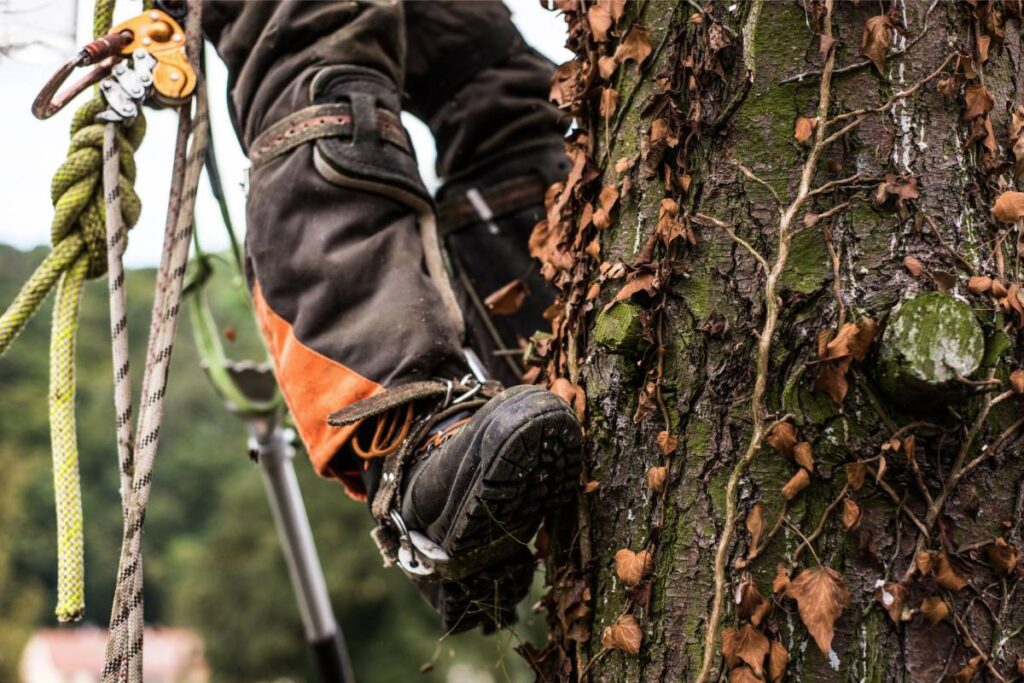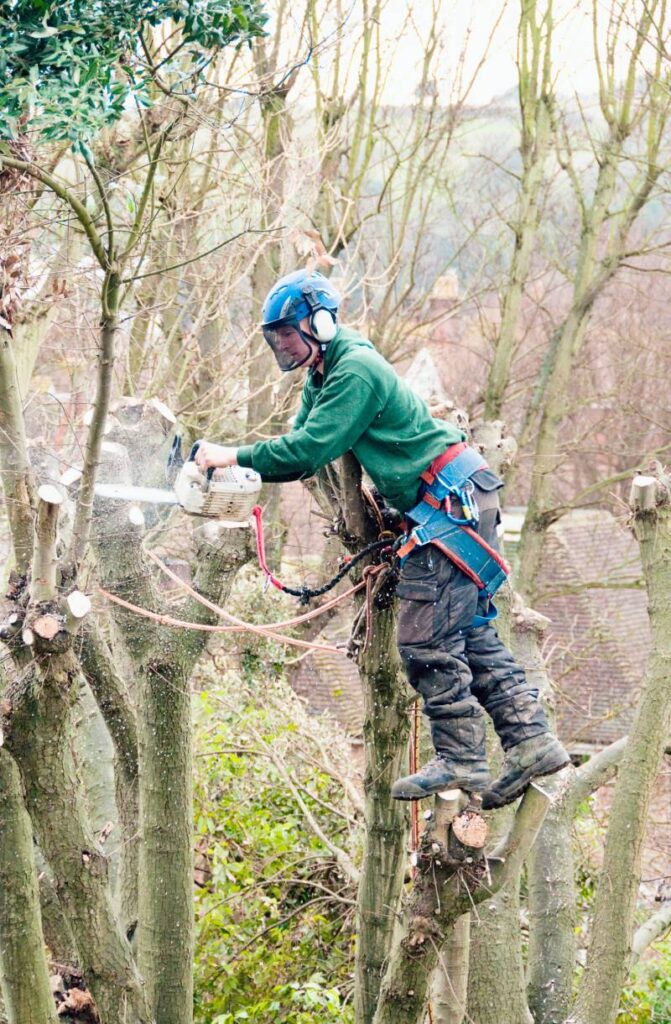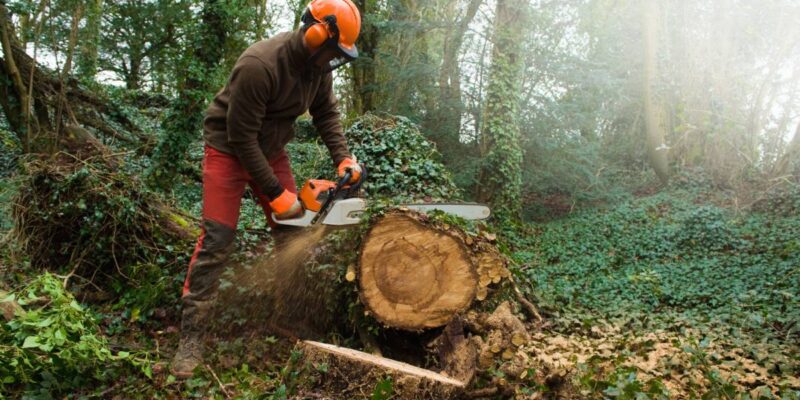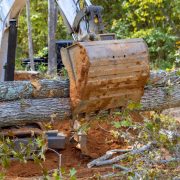The terms “tree surgeon” and “arborist” are often used interchangeably, but they can have subtle differences in meaning depending on the region and context.
In general, both tree surgeons and arborists are professionals who specialize in the care and maintenance of trees, but the emphasis of their work may vary.
In this article, we’ll about to tell you what makes them distinct. Here we go!
What’s the difference between a tree surgeon and an arborist?
- Tree Surgeon:
- A tree surgeon is often associated with the hands-on, practical aspects of tree care, including tree pruning, removal, and other physical tasks.
- Tree surgeons may focus more on the immediate health and safety of trees, dealing with issues such as diseased or damaged branches, tree felling, and stump removal.
- The term “tree surgeon” is commonly used in the United Kingdom and some other European countries.
- Arborist:
- An arborist is a more comprehensive term that encompasses a broader range of tree-related expertise, including tree biology, pathology, and management.
- Arborists may be involved in tree planting, long-term care, disease diagnosis, and overall tree health assessment.
- The term “arborist” is often used in North America, and it is generally considered a more formal and professional title.

It’s worth noting that the distinction between the two terms may not be universally agreed upon, and in many places, they are used interchangeably. In practice, both tree surgeons and arborists may perform similar tasks, and the choice of terminology may depend on regional conventions and personal preferences.
In any case, both professionals play vital roles in preserving and maintaining the health of trees in urban and natural environments.
Primary Job Duties of a Tree Surgeon
A tree surgeon is often seen as the “man of action” because they handle tasks like tree felling, stump removal, log splitting, and using a chainsaw to shape branches. They also assist with:
- Clearing operations after storms (removing fallen or damaged trees).
- Creating braces for tree support.
- Providing consultation and advice on proper tree care.
Primary Job Duties of an Arborist
While arborists can perform similar tasks as tree surgeons, their main focus is on tree and plant health. They carefully assess trees, plants, and soil conditions, identifying diseases and determining the best treatments. Arborists also handle:
- Planning and preparing job sites for safety.
- Studying tree symptoms and recommending treatments.
- Installing protective devices like screen fences for plants.
- Controlling tree insects or diseases with appropriate treatments.
- Identifying whether a tree is dead or can be saved.

Certifications Needed for Tree Surgeons vs. Arborists
Typically, formal education is not mandatory for a tree surgeon. Instead, they undergo training and gain hands-on experience for a successful career. Training should be completed through a registered centre or organization. However, there are exceptions based on three factors:
- Career Advancement:
- Tree surgeons seeking career advancement may be required to pursue formal education in Urban Forestry or arboriculture.
- Company Requirements:
- Companies often set their own standards. At a minimum, they may require a high school diploma or equivalent from tree surgeons.
- Local Council Requirements:
- Each state has specific standards, especially for those running their own businesses. Seeking guidance from local government ensures compliance with necessary paperwork and expertise.
On the other hand, for an arborist to establish a successful career in Australia, formal education (a degree or equivalent), passing required exams, and demonstrating substantial experience are essential.
Arborists can pursue certifications in arboriculture, landscape design, or horticulture. Similar to tree surgeons, the requirements may vary for career advancement, company policies, and local council standards. Additional common requirements include:
- Approval from Relevant Associations:
- Certifications from recognized associations, such as the International Society of Arboriculture, are often necessary.
- Additional Certifications:
- Providing proof of skills, expertise in applying chemical solutions, and experience working near utility lines may be required.
- Hazardous Equipment Certification:
- Certification to operate hazardous equipment is often a standard requirement for arborists.
When do I need a tree surgeon or an arborist?
Whether you need a tree surgeon or an arborist depends on the specific needs of your trees and the nature of the tasks you require. Here are some guidelines to help you decide:
When to Choose a Tree Surgeon
- Immediate Tree Care Needs:

- If you have urgent issues such as damaged or overhanging branches, fallen trees, or potential safety hazards, a tree surgeon is a good choice. They specialize in hands-on tasks and are often called for immediate action.
- Tree Pruning and Shaping:
- If you need pruning, shaping, or removal of specific branches, a tree surgeon can handle these tasks efficiently using tools like chainsaws.
- Stump Removal:
- Tree surgeons are typically skilled in stump removal, so if you have old tree stumps that need to be cleared, a tree surgeon can take care of this.
- Emergency Situations:
- In emergency situations, such as storm damage, a tree surgeon is often the go-to professional to quickly address safety concerns.
When to Choose an Arborist
- Tree Health Assessment:
- If you’re concerned about the overall health of your trees, want a detailed assessment of their condition, or need advice on long-term care, an arborist is the right choice.
- Disease Diagnosis and Treatment:
- Arborists are trained to identify diseases and pests affecting trees. If you suspect your tree is diseased or infested, an arborist can recommend appropriate treatments.
- Tree Preservation:
- For projects focusing on preserving and enhancing the health of your trees, such as planting, soil care, and long-term maintenance plans, an arborist is the expert to consult.
- Species Selection and Planting:
- If you’re planning to plant new trees on your property and need guidance on suitable species, planting techniques, and care practices, an arborist can provide valuable insights.
- Consultation for Tree Management:
- Arborists can offer professional advice on various aspects of tree management, including proper pruning practices, support systems, and overall care.
In summary, choose a tree surgeon for immediate and hands-on tasks, especially those related to safety and urgent needs. Select an arborist for a more comprehensive approach to tree health, disease diagnosis, long-term care, and consultation on various aspects of tree management.












